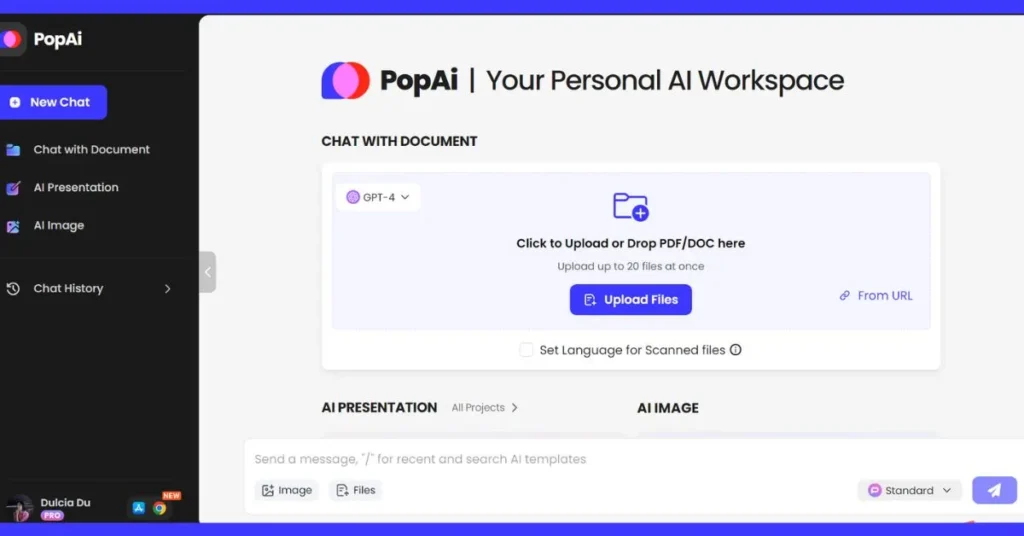Contents
Introduction
Document translation involves translating a document’s text and content from one language to another while preserving its original context, meaning, and intent. This approach ensures good communication and comprehension between persons, organizations, or entities that speak multiple languages. Document translation covers various materials, including but not limited to:
Types of Document Translation
- Text Translate Document Translation: This includes translating any written material, such as essays, reports, letters, and other documents that contain text.
- Legal Documents: Ensuring accurate translation of legal texts, such as agreements, contracts, court records, and patents, where accuracy and adherence to legal terminology are essential.
- Academic Papers: Translating research and academic documents while upholding academic norms and content integrity.
- Business Document: Translating financial reports, proposals, marketing materials, and communication documents for international audiences.
- Technical Document: Interpreting user manuals, technical manuals, and documents pertaining to goods and services, often involving industry-specific terminology.
- Medical Document: Translating medical records, research papers, patient data, and pharmaceutical paperwork.
- Multimedia Document: Translating document files contained in multimedia formats, such as subtitles in films, slideshows, and other visual or audio documents.
Translating documents is more than just swapping out words in one language for their equivalents in another. Proficient translators ensure that the translated document precisely conveys the original meaning by considering linguistic subtleties, cultural background, and specialized vocabulary.
The Process of Translating Document Files
1. Understanding the Source Text
The translator must read and comprehend the document in its entirety to grasp its context, tone, and substance for accurate translation.
2. Research and Terminology
The translator conducts research to guarantee accurate translation of any specialized terminology (legal, medical, or technical) that may be present in the text.
3. Proficiency in Language Pairs
Translators need to be skilled in both the source and target languages to effectively communicate the document’s meaning.
4. Cultural Considerations
Cultural subtleties and context are essential for preserving the message’s integrity. Translators consider cultural variations that could affect how specific expressions or phrases are understood.
5. Translation Process
The actual translation process involves transferring the meaning of the content from the source language into the target language.
6. Editing and Proofreading
The document undergoes editing and proofreading following the initial translation to ensure accuracy, coherence, and correct grammar in the translated text.
7. Formatting
Translators pay careful attention to formatting to ensure that the translated work maintains the original’s structure and layout.
8. Beyond Language Conversion
Translating documents accurately involves communicating the intended message in a way that is appropriate for the target culture and setting. It is essential for removing linguistic barriers, promoting cross-cultural communication, and enabling international cooperation.
How Are Document Files Translated by an AI Tool?
AI-powered translation tools, such as Popai’s AI-powered translation suite, use cutting-edge technology to translate text between languages, especially when it comes to document translation. Here’s a condensed description of the general operation of a translation tool:
- Text Interpretation
- Translation Retention
- Algorithms and Language Models
- Alignment and Charting
- Context-Based Modification
- Polishing and Quality Control
- Loop of User Feedback
- Output Generation
The Best Tools to Translate Document Files
- Google Translate
- DeepL Translator
- Microsoft/Bing Translator
- Amazon Translate
- Smartling
- Systran
- Popai AI Workspace
Conclusion
Translating document files is a multi-faceted process that requires linguistic expertise, cultural sensitivity, and technological tools. By understanding the key steps and leveraging the right translation solutions, such as Popai’s AI-powered translation suite, you can effectively bridge language barriers and enable seamless cross-cultural communication.
FAQs
What is document translation?
Document translation involves translating a document’s text and content from one language to another while preserving its original context, meaning, and intent.
Why is document translation important?
Document translation ensures good communication and comprehension between persons, organizations, or entities that speak multiple languages, facilitating international cooperation and cross-cultural communication.
What types of documents can be translated?
Documents of various types can be translated, including text documents, legal documents, academic papers, business documents, technical documents, medical documents, and multimedia documents.
What are the key steps in the document translation process?
The key steps include understanding the source text, research and terminology, proficiency in language pairs, cultural considerations, the translation process, editing and proofreading, and formatting.
How do AI-powered translation tools work?
AI-powered translation tools use advanced algorithms and language models to interpret, translate, align, modify, and polish text, ensuring accurate and contextually appropriate translations.
What are some of the best tools for document translation?
Some of the best tools include Google Translate, DeepL Translator, Microsoft/Bing Translator, Amazon Translate, Smartling, Systran, and Popai AI Workspace.
How can I ensure the accuracy of a translated document?
To ensure accuracy, work with proficient translators, use reliable translation tools, and conduct thorough editing and proofreading of the translated document.











